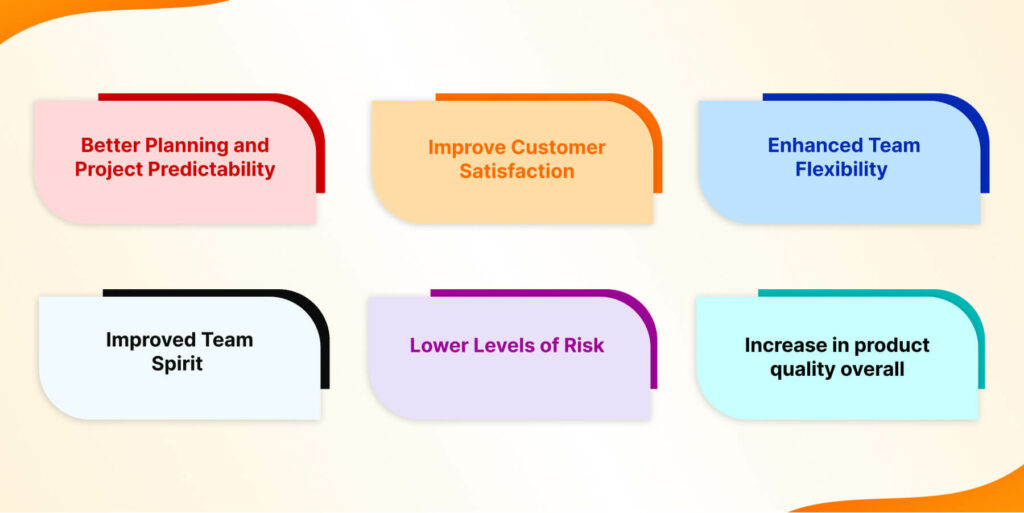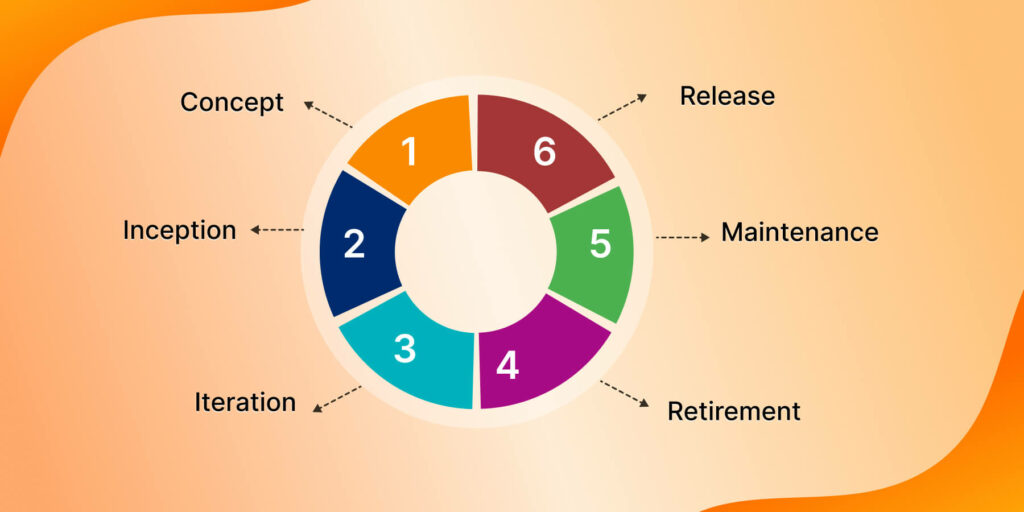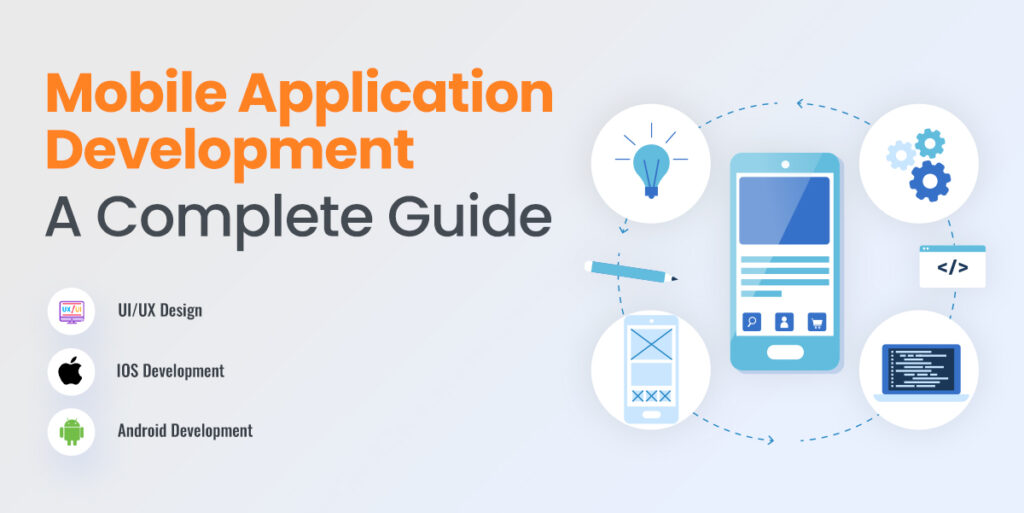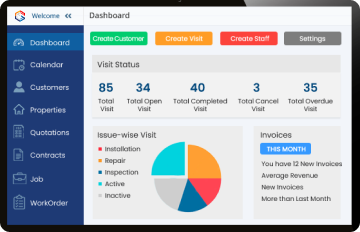As it produces software rapidly and effectively, the Agile Software Development process has become extremely popular over time. It is a simple and adaptable method for creating software that emphasizes collaboration, adaptive planning, short turnaround times, and customer feedback to offer incremental and interactive outcomes.
In this comprehensive guide, we’ll delve into the key concepts, processes, and best practices of Software Development Agile, giving you the tools you need to adopt this transforming approach and make your projects successful.
What is Agile Software Development?
A larger project is divided into several phases using an Agile development framework. It encourages purposeful communication and collaboration, which aids teams in staying on task, meeting deadlines, and producing excellent results.
A planning phase known as a “sprint” is a common feature in Agile frameworks, during which tasks are given points based on how long they are anticipated to take to complete. The work is then divided into smaller iterations based on the capabilities of the team.
A number of meetings are then scheduled along the way to keep the team in communication, like weekly “standups,” during which everyone gives a quick overview of their current projects and responds to queries from other team members.
Key Benefits of Agile Software Development

- Better Planning and Project Predictability
It is simpler to manage a project smoothly when project risks are more visible, can be predicted, and have the right mitigation strategies planned.
- Improve Customer Satisfaction
The agile methodology increases customer satisfaction and retention by integrating them into decision-making throughout the project.
- Enhanced Team Flexibility
Agile enables project teams to have significantly greater adaptability than traditional methods when implemented throughout the team.
- Improved Team Spirit
Teams organize and manage their own work in an agile setting, giving them more autonomy and control over their decisions.
- Lower Levels of Risk
There is a greater opportunity to identify risks and pivot to solve them because Agile projects operate in smaller sprints as opposed to one large delivery.
- Increase in product quality overall
The agile methodology emphasizes regular testing, so the overall quality of the finished product will be higher. Additionally, clients who are active in the development process can request adjustments as the project moves forward.
How to Know If Agile is Right for Your Business?
Consider the following things before implementing an Agile framework:
- Agile maturity of your team (the extent to which your team has grown more agile over time)
- Your team’s size
- Objectives and reasons for implementing agile software development methods in your organization
- Your particular industry (what is effective for software businesses may not be effective for others)
- The goods or value that your business provides
What are Agile Software Development Frameworks?
Agile development frameworks are techniques and tools that assist teams in staying flexible and overcoming challenges. There are four types of Agile Development Frameworks:
| Name of Framework | Summary of Each Framework |
| Scrum | Scrum is an Agile framework that promotes iterative development, frequent communication, and self-organizing teams, enabling efficient and collaborative software development with a focus on delivering customer value. |
| Kanban | By visualizing tasks on a board, limiting work in progress, and encouraging continuous delivery, Kanban, a crucial element of Agile development, enhances workflow. |
| Lean Software Development (LSD) | In order to efficiently and effectively provide the greatest possible value to consumers, lean software development is an Agile methodology that places an emphasis on waste reduction, flow optimization, and continuous improvement. |
| Scaled Agile Framework (SAFe) | A comprehensive Agile development framework called Scaled Agile Framework (SAFe) enables organizations to spread Agile techniques across numerous teams, departments, and projects, promoting alignment, teamwork, and effective delivery. |
Read More: Build Your Software and Make Your Processes Faster
6 Phases of Agile Development Lifecycle

Concept
The lifecycle’s initial step is the concept. At this step, the product owner will outline their desire in depth. When there are multiple projects, they will prioritize the ones that are the most crucial or urgent.
Inception
The concept must first be defined before the agile software development methodology can start. The team of developers and designers chosen for the project are then responsible for designing the architecture and producing mockups.
Iteration
The construction phase, also known as the iteration phase, will be the next step for the project. Since the majority of the project’s building and testing occurs at this stage, it usually takes the longest.
Release
A group of professionals performs quality assurance testing on a product after it has gone through the iteration phase. If bugs are found, they need to be fixed as soon as feasible.
Maintenance
Your product will move into a phase known as maintenance once it has been released. You must watch for bugs during this stage of the product’s lifespan and ensure the system can keep growing to meet consumer demand. You could also want to consider introducing new features to draw in additional users and unlock new business opportunities.
Retirement
A product should be removed from the market when a company decides it is no longer producing value. There are two basic reasons for a company to retire a product:
- It is being replaced by more recent, superior software.
- Within the objectives or framework of the organization, it is no longer relevant.
The end-of-life procedure will start when a product is retired. Users need to be informed by the development team that it is being retired.
Start Creating an Agile Development Plan
If you want to start creating an agile development plan, there are five crucial steps that you need to follow:
- Defining your vision
- Roadmapping
- Release planning
- Iteration planning
- Daily standups
Agile Development Tools Used For
It’s crucial to use the appropriate project management tools. Agile development is one of the most significant factors to track to evaluate a team’s performance and measure business outcomes. Tools for Agile development can be used for:
- Better time and money management
- Engage stakeholders.
- Greater transparency
- Enhanced capacity for problem-solving
- Produce work of a higher quality.
- Reduce the risk
- Boost morale
Best Tools to Utilize for Agile Software Development
We organize our workflow, interact with coworkers and clients, and work together as a team using Agile development tools. As a leading custom software development company, we recommend the following tools for agile development:
- Jira: It is the ideal tool for corporate teams to use for problem tracking and project management.
- GitHub: The top platform for technical tool and software cooperation is GitHub.
- AWS Amplify: It is best for technical tools
- ClickUp: The best task management, personalized workflows, documentation, and team communication tool is ClickUp.
- MURAL: Most effective for teamwork.
- LucidChart: One of the best tools for team collaboration.
- Slack: It is one of the best team communication tools.
- Planiketa: This tool is best for planning, research, and staff evaluations.







